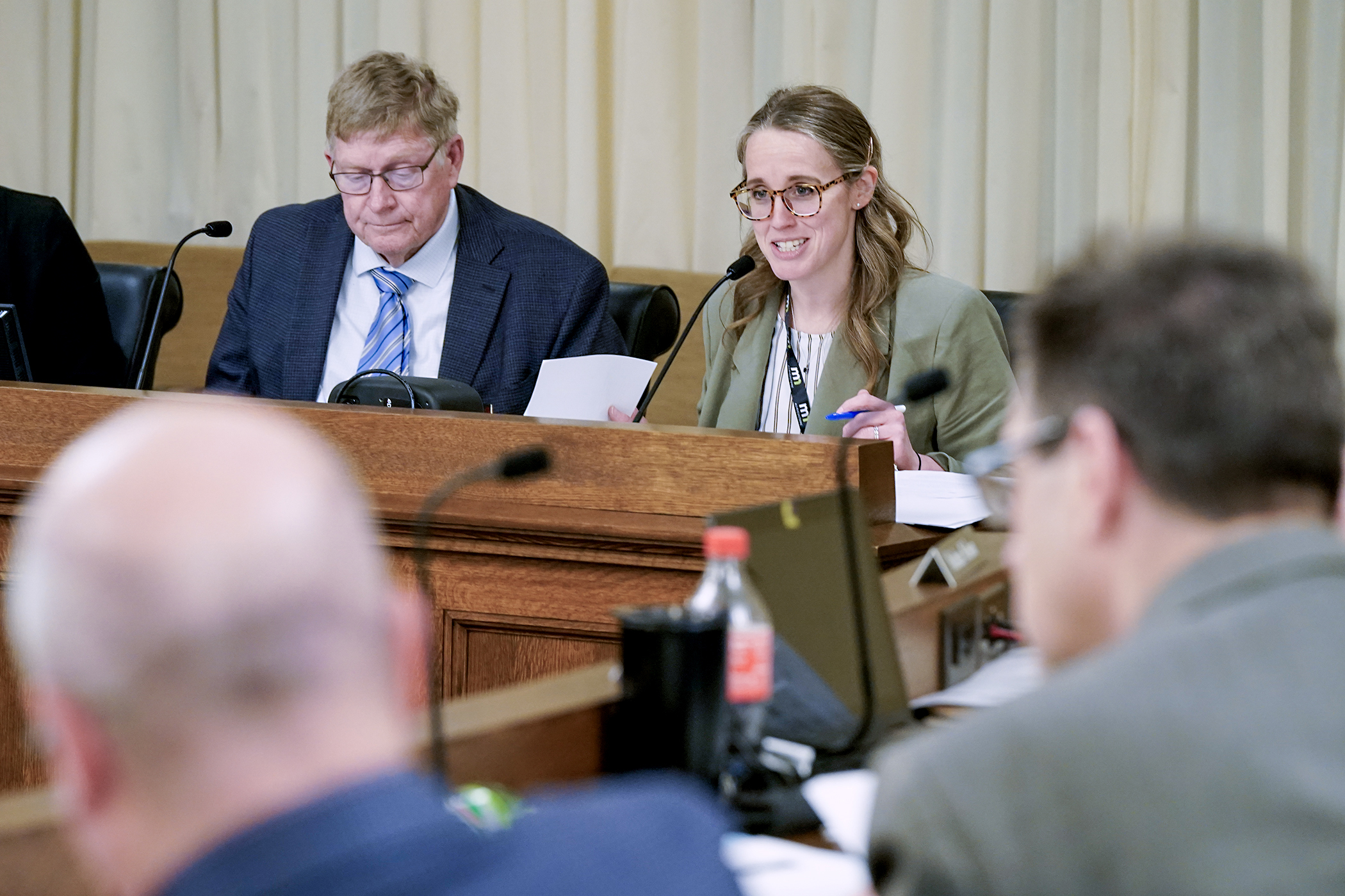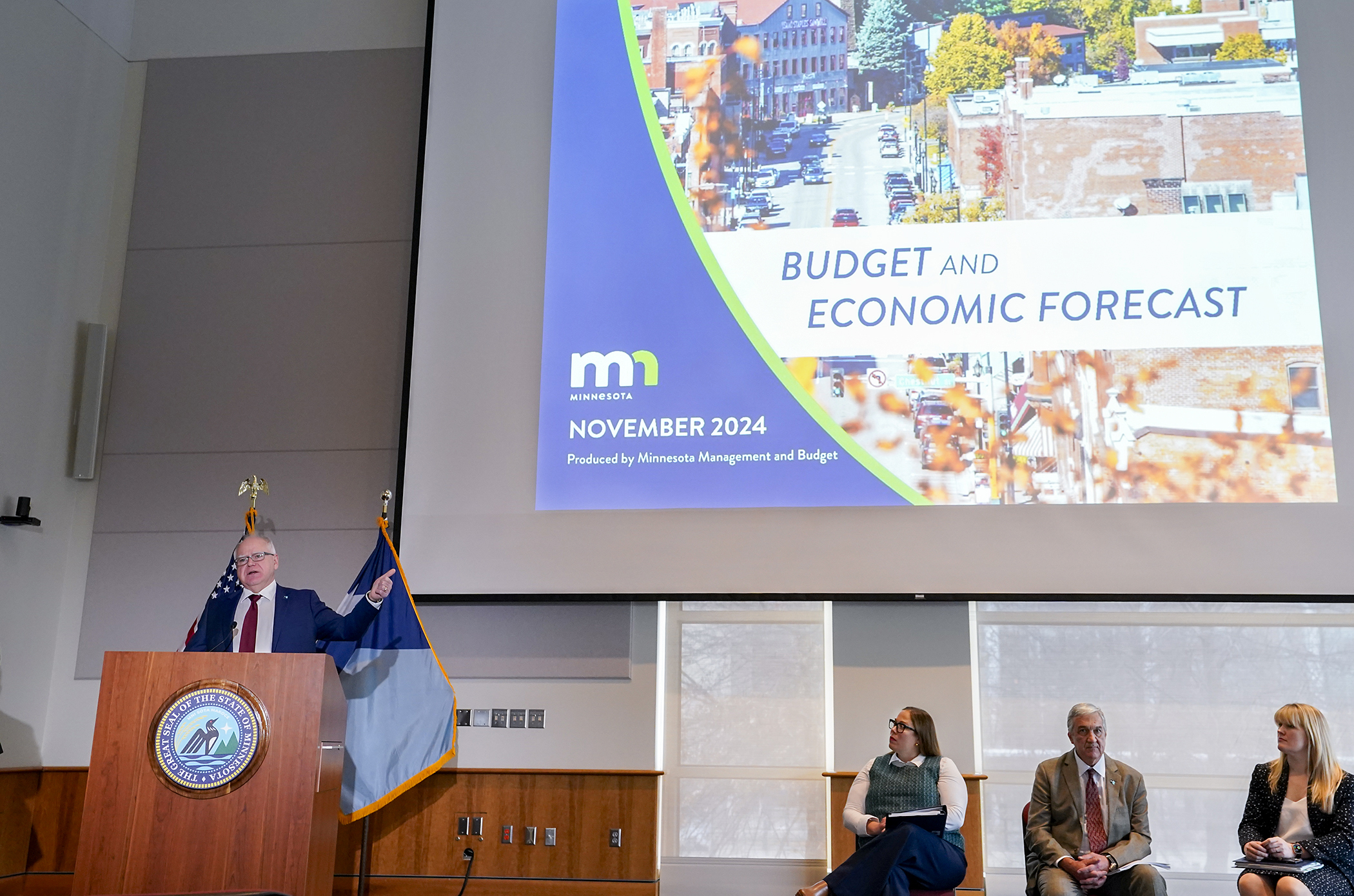Agriculture committee lays over governor’s updated budget proposal

Like the weather that farmers must continually deal with, the budget outlook for the Department of Agriculture is ever changing.
The House Agriculture Finance and Policy Committee heard Gov. Tim Walz’s budget recommendations for the department Wednesday and the bottom line is a requested appropriation of $152.8 million in the 2026-27 biennium, an 18% decrease from the current biennial budget of $186.6 million.
But that request is also $16 million less than the Republican-sponsored HF1704 heard by the committee March 10 that proposes to appropriate $168.9 million from the General Fund.
And the budget details discussed Wednesday also differ slightly from Walz’s own budget recommendations unveiled in January, before he revised them based on a lowered budget forecast released in early March.
[MORE: Governor’s revised Agriculture Department recommendations]
The committee heard a walkthrough of HF2446, sponsored by co-chair Rep. Paul Anderson (R-Starbuck), received a presentation from department officials and took public testimony. It took no action.
Anderson and Rep. Rick Hansen (DFL-South St. Paul), the other co-chair, will consider the governor’s recommendations and work together to craft a committee budget bill “by the first part of next week.”
By the numbers
Walz’s proposal calls for the following General Fund appropriations by agency in the 2026-27 biennium:
- $130.8 million to the Department of Agriculture (a decrease of nearly $33 million);
- $13.2 million to the Board of Animal Health (an increase of $547,000); and
- $8.8 million to the Agricultural Utilization Research Institute (a decrease of $1.7 million).
The committee took no action on an amendment to appropriate $1 million in each year of the 2026-27 biennium from the General Fund for the Office of Broadband Development to bring high-speed internet access throughout the state.
Anderson said it might move as a separate bill or be attached to another committee’s budget bill.
[MORE: View the fiscal spreadsheet]
Policy proposals
The governor’s budget contains several policy provisions, including two that also come with fiscal changes.
It would return to the General Fund $3 million of the $7 million appropriated to the green fertilizer production facilities program in fiscal year 2024. The program provides funding to agricultural and rural electric cooperatives to invest in green fertilizer production facilities located in Minnesota.
A provision to increase grain buyers and storage license fees to a minimum of $500 for each licensed location prompted letters of opposition from five grain associations and cooperatives.
That increase would cost many grain buyers and storage facilities between 40% and 250% more each year and make grain elevators near state borders less competitive, said Laura Lemke, executive director of the Minnesota Grain & Feed Association.
The bill would make several changes to Rural Finance Authority loan programs, including:
- requiring that the state only participate in restructuring loans that are at least $50,000;
- limiting the eligibility for disaster recovery loans to borrowers with a total net worth of less than $5 million;
- allowing microloans to be used to finance the purchase of agricultural land; and
- requiring that borrowers getting loans from the farm opportunity loan program maintain a net worth less than $1.7 million adjusted for inflation for the period of the loan.
Related Articles
Search Session Daily
Advanced Search OptionsPriority Dailies
Minnesota's budget outlook worsens in both near, long term
By Rob Hubbard It looks as if those calling for less state spending could get their wish, judging from Thursday’s release of the February 2025 Budget and Economic Forecast.
A state su...
It looks as if those calling for less state spending could get their wish, judging from Thursday’s release of the February 2025 Budget and Economic Forecast.
A state su...
Minnesota’s projected budget surplus balloons to $3.7 billion, but fiscal pressure still looms
By Rob Hubbard Just as Minnesota has experienced a warmer winter than usual, so has the state’s budget outlook warmed over the past few months.
On Thursday, Minnesota Management and Budget...
Just as Minnesota has experienced a warmer winter than usual, so has the state’s budget outlook warmed over the past few months.
On Thursday, Minnesota Management and Budget...